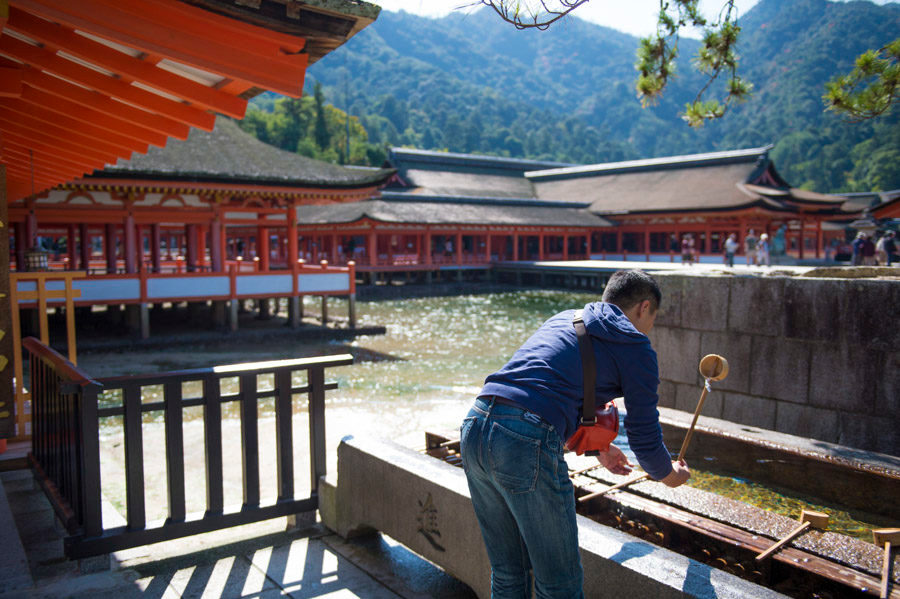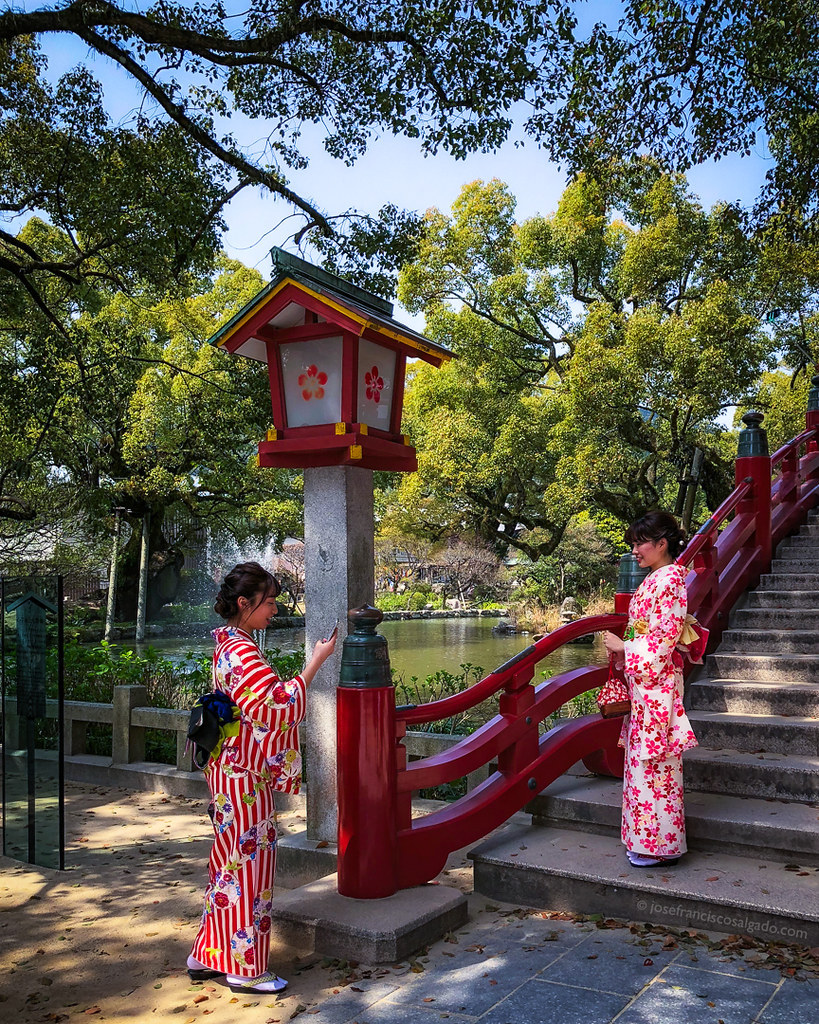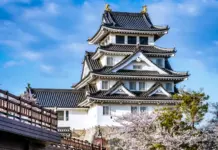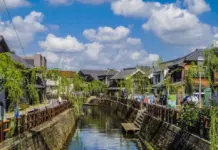“When in Rome do as the Romans do” is no doubt one of the must-bear-in-minds to every travelers and if you are planning a trip to Japan – the country of temples and shrines – you should also “do as the Japanese do” when visiting Japanese shrines as a way of showing respect and learning their religious life.
- 13 Japanese etiquettes for travelers you should know
- Japan travel advice — 6 useful advices to have a wonderful trip in Japan
- Japan is not perfect at all: 20 things which foreigners find uncomfortable in this country
- What to know before traveling to Japan? — Top 12 things & what to know before going to Japan
- 12 weird facts about Japan



Japanese shrines are places revered in the Shinto religion in Japan since time immemorial as places where gods are deified.

The easiest way to identify shrines is that a shrine has one of the famous torii gates. If you have the chance to pray at a shrine, here is 10 notes showing how to properly pray and respect the shrine!
1. Bow at the torii gate

There is always a torii gate at the entrance of Japanese shrines. The very front of the shrine has the “shrine has the “Ichi no torii” (the first torii) and you walk through it to get to the “sando,” the road approaching the shrine. Avoid walking in the center of the torii, just stick close to the sides near one of the pillars. Stop and bow before you walk through!
2. Don’t walk in the center of the sando

When you walk up the sando, do not walk in the center. The center of the sando is called the “seichuu,” and it’s where the gods walk. We should not be walking there. Also, while you’re on temple grounds, do not speak loudly.

3. Do clean your mouth and hands at the temizuya
There is a vessel called the temizuya on the side of the sando as you head up to the shrine at which you can purify yourself.

First, you take the ladle in your right hand, scoop up some water, and clean your left hand with it. Then, you switch the ladle to the left hand, and clean your right hand with it. Third, you put the ladle back into your right hand and scoop up more water with it. Cup your left hand and pour some water into it; with that you will cleanse your mouth. Do not put the ladle up to your mouth, make sure to only use your hand.

When you have done rinsing your mouth, once again clean your left hand using water from the ladle. Finally, lift the ladle so the remaining water streams down the handle before putting it back in its place against the temizuya.
4. Ring the bell before praying
When you get to the front of the main shrine, don’t stand in the middle. This is for the same reason you shouldn’t stand in the middle of the sando. Then, bow once. If there’s a bell, ring it.
It’s how you inform the gods that you’ve come to visit.
5. Make a monetary offering before praying

Don’t just throw your monetary offering into the box, put it in quietly. There is no set amount you should give. Anything you’d like, 1 yen or even 10,000 yen, whatever you want to give is fine. It’s popularly said that 5 yen is good because it sounds the same as the word for “bond” (as in relationship), but it’s up to you.
6. When you pray, bow twice, clap twice, then bow once more

First, when you bow twice, you face the shrine and you bow deeply until your back is flat and your hips are at a 90-degree angle. When you clap, make sure that your palms meet but that your right hand sits a little below your left. Open your hands as wide as your shoulders and clap twice. Then bring your hands together, and lower your hands while you pray. After you finish praying, bow deeply once more. Depending on the shrine, there may be a different process (for example, at the Izumo-taisha Shrine in Shimane, it’s two bows, four claps, one bow).
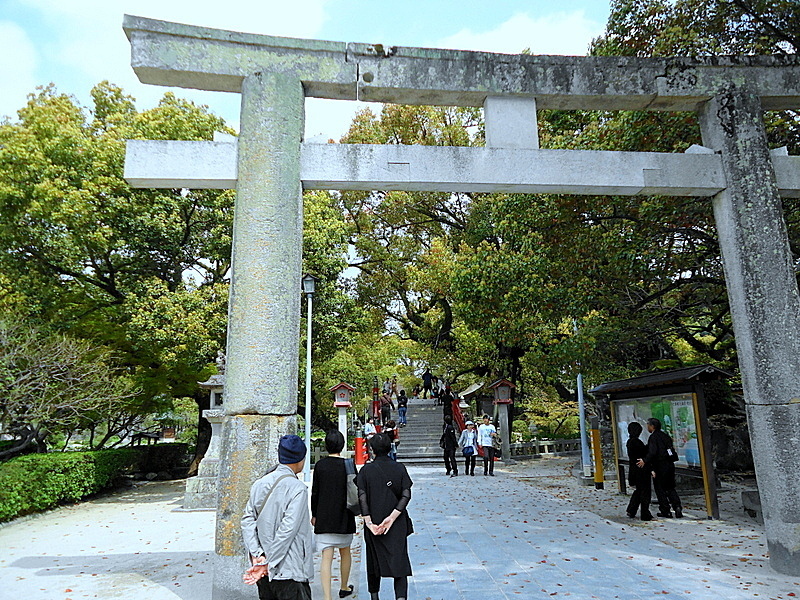
7. How to pray
If it’s your first time at a shrine, you should start with your name, address, and the gratitude you have for being able to pray. After that, for the rest of your visits you can simplify your introduction.



8. Pull an omikuji fortune
If you pull a fortune that’s not good, you tie it up in order to exorcise the bad luck. If you pull a good fortune, there’s no need to tie it. There are usually places specifically to tie them, so only use that for your fortunes.
9. Write an ema
In ancient times, it was thought that gods rode horses, so originally real horses were used as offerings. However, now “ema” are used, wooden votive blocks made up of the characters for “picture” and “horse.”
When you go to pray at a shrine or temple, you can pray by writing your wishes on an ema and offering it by tying it to its specific area.

10. On your way out, turn around and bow once more towards the shrine

When you pass through the torii gates on your way out, make sure to turn around and bow once more towards the shrine. The most important thing to do when you pray at a shrine is to offer words of gratitude to the gods.
The biggest difference between a shrine and a temple is the way you pray. At a shrine, you clap your hands, but at a temple, you simply bring your hands together and can chant your prayer.





Some best day tours, trips, activities and transfer services, tickets in, to and from Tokyo you can refer to
- Private Narita International Airport Transfers (NRT) for Tokyo 23 Wards, Hakone, or Karuizawa
- Private Haneda International Airport Transfers (HND) for Tokyo 23 Wards, Hakone, or Karuizawa
- Airport Limousine Bus Transfers from/to Narita and Haneda International Airport (Free Wifi Onboard)
- Tokyo Amazing Sightseeing Bus Day Tour
- Tokyo Highlights Private Day Tour
- Nikko Day Tour from Tokyo
- Mt Fuji & Hakone Day Tour: Lake Ashi & Ropeway Day Trip from Tokyo
- Nikko Cultural Day Tour from Tokyo
- Tokyo Subway Ticket (24, 48, or 72 Hours)
- Tokyo Skyliner and Tokyo Subway Ticket
- Shuttle Bus Transfers (One Way/Round Trip) from Shinjuku/Ikebukuro to Tokyo Disneyland or Tokyo DisneySea
- Tokyo Disney Resort Park Ticket
- Klook Pass Greater Tokyo
- SHIBUYA SKY Ticket
- Warner Bros. Studio Tour Tokyo – The Making of Harry Potter Ticket
- Skyliner Narita Airport Express Ticket
- TeamLab Planets Ticket
- TOKYO SKYTREE® Ticket
- Limousine Bus Narita or Haneda Airport to Tokyo
- Skyliner Narita Airport Express With Tokyo Subway Ticket
- JR Tokyo Wide Pass
- Sky Hop-on and Hop-off Bus Pass
- 4G Prepaid Sim Card (JP Airports Pick Up) for Japan
- 4G WiFi (BKK and DMK Airport Pick Up) for Japan (Unlimited Data)
- JR Pass for Whole Japan (7, 14, or 21 Days)

Are you looking for more Tokyo travel guide and top things to do in Tokyo: Tours, activities, attractions and other things? Read more: Tokyo itinerary 3 days — What to do in Tokyo in 3 days?































![10 best airports in Asia in 2016 [RANKED] kuala-lumpur-international-airport-best airports in asia in 2016 by skytrax ratings](https://livingnomads.com/wp-content/uploads/2016/08/29/kuala-lumpur-international-airport-best-airports-in-asia-in-2016-by-skytrax-ratings-218x150.jpg)












